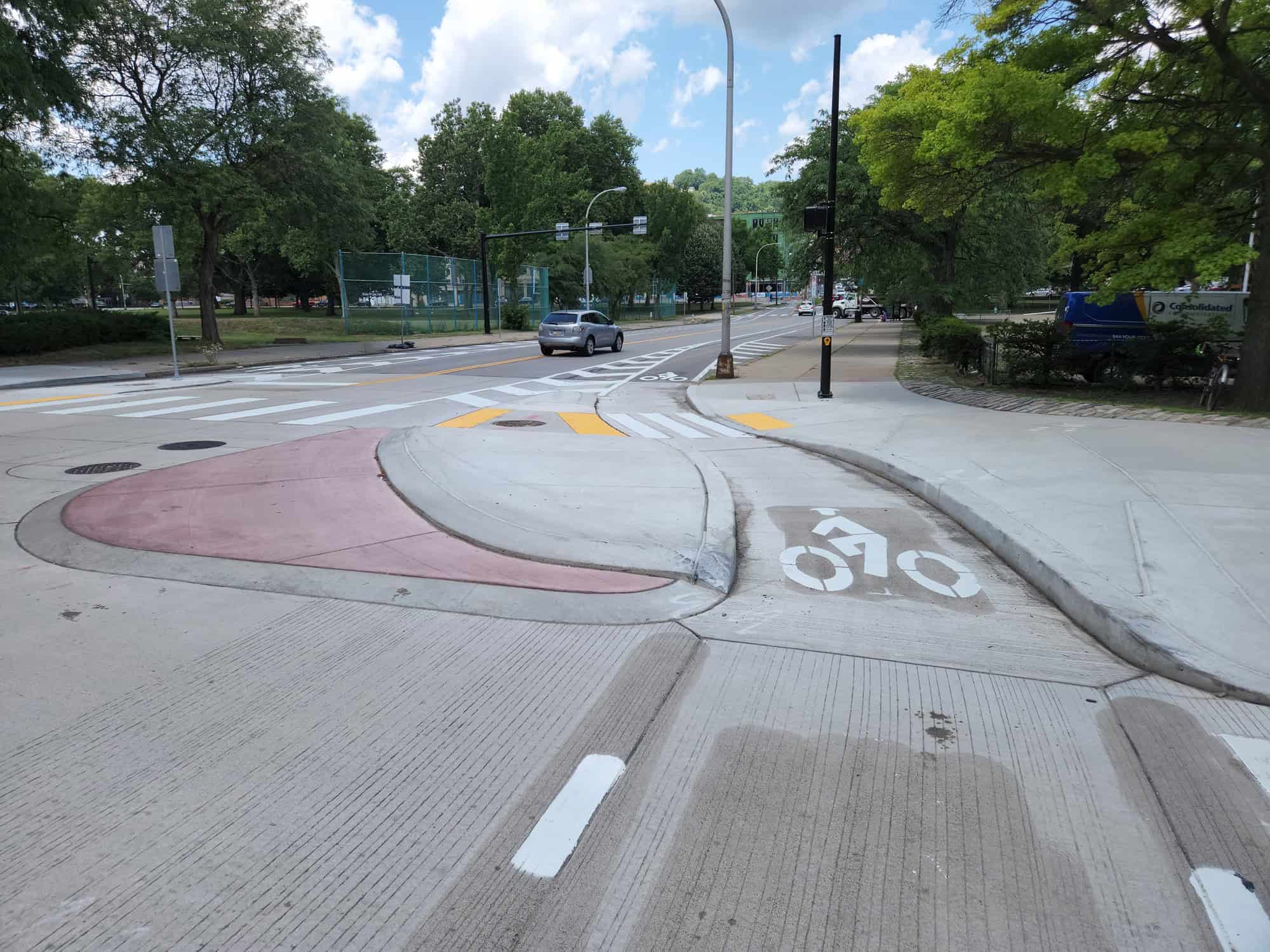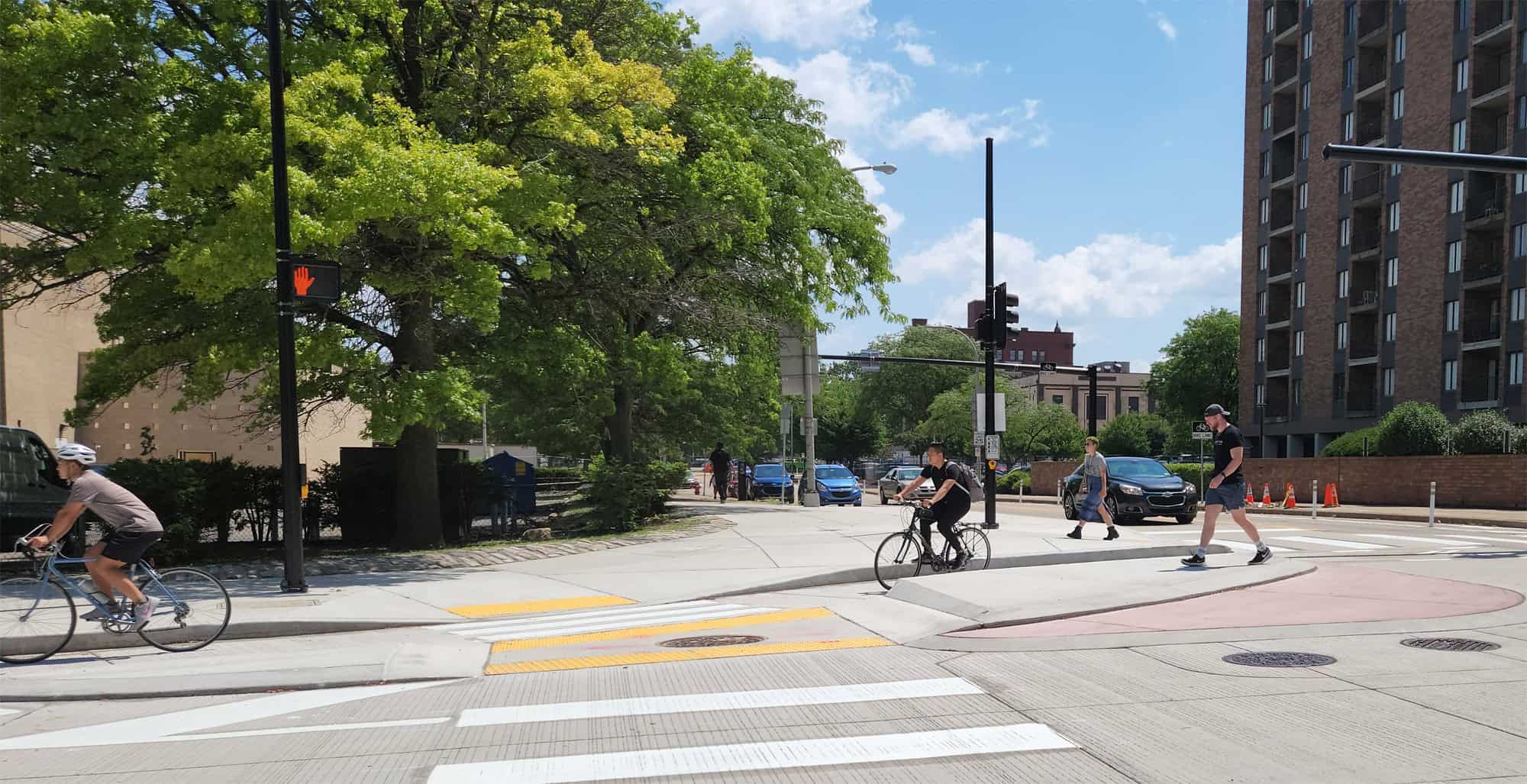
This portion of North Side roadway allows for bicycles and vehicles to travel safely in both directions
To address an urban renewal era blunder in the Northside that displaced residents and broke up the street grid, the City of Pittsburgh has opened the Allegheny Circle two-way conversion project. Previously a four lane, single direction suburban ring road, the City first converted the inner lane into a two-way protected bike lane back in 2017. Since then, they’ve been working on creating a design that would allow motor vehicles to also use the road in both directions.
Located in the heart of the Northside, Allegheny Circle provides access to the Children’s Museum, several schools, churches, Allegheny Commons Park, and a huge development now known as Nova Place, featuring the largest parking garage in Pennsylvania.
The Bike Lanes feature Pennsylvania’s first “protected intersections”
In 2017, the City’s Department of Mobility and Infrastructure (DOMI) converted the inner lane of the ring road into a two-way protected bike lane, with the intention of making future improvements to the ring road in general. The bike lane closed a gap and gave people on bikes more options to more easily connect to the Northside’s growing bike infrastructure. However, getting into and out of the bike lanes remained a bit awkward. Once the two-way conversion design was settled on, it allowed DOMI to design a better way to enter and exit the bike lanes using protected intersections. These protected intersections were actually installed late last year, but with the two-way conversion, are now part of the final vision.

What is a Protected Intersection and why we shouldn’t give up at the intersection
Often, bike lanes disappear at the intersections, forcing people on bikes to merge into mixed traffic in order to minimize the disruption of motor vehicle flow. A protected intersection maintains the separation of bikes and cars all the way to the intersection, which allows for bikes to remain separated from moving cars, as well as providing the right of way over turning motor vehicles.
According to the National Association of City Transportation Officials (NACTO), protected intersections “can reduce the likelihood of high speed vehicle turns, improve sightlines, and dramatically reduce the distance and time during which people on bikes are exposed to conflicts.” One example is the reduction of a right-hook collision, which is when a right turning motorist collides with a through moving cyclist.
One feature of protected intersections is the corner island. Corner islands help tighten the corner’s turn radius and create a bike queue area after the crosswalk, far in advance of the motor vehicle stop bar and in sight of drivers. People on foot and using personal mobility devices get many of the benefits of these curb extensions as well, because the crossing distance is far shorter, and thus safer.
In Allegheny Circle, the protected intersections allows bicyclists to queue close to the cross street, and then turn either left or right when the signal turns green.
Currently, protected intersections are also proposed for the Penn Circle two-way conversion project, also a fix to an urban renewal era fail.

